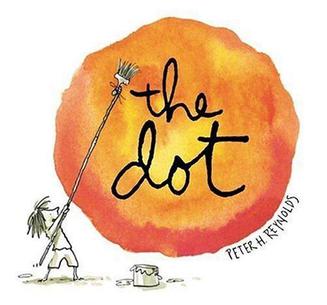
Vashti is a girl who believes she can’t draw. When her art teacher notices that she left her assignment blank, Vashti is instructed to just “make a mark and see where it takes you.” Vashti is only able to make a small dot on her paper, but to her surprise, the teacher asks her to sign it and displays it in her office the next week. Believing that she can do better than just that, she starts drawing multiple, more elaborate, and colorful pieces centered around the dot motif, earning widespread attention and realizing that she is indeed an artist.
Later in life, Vashti encounters a young boy who believes he can’t draw. After he claims that he can’t even draw a straight line, Vashti asks him to try his best at making one. While the result is imperfectly squiggly, she nonetheless instructs him to sign it, starting a whole new adventure in the process.
Notes
The plot of this book is really interesting. How important is a healthy and safe learning environment for kids to develop their creativity? What is the role of teachers and parents to encourage kids to not be afraid to make mistakes in order to learn? Why predetermined beliefs like “I can’t draw”, and “I can’t make art” is presented in the life of kids of such young ages, and how? What are the techniques that teachers use to unblock this fear? Why are these thoughts still present in adulthood life? What are the consequences of it? How do society’s expectations about art influence how kids learn how to make and appreciate art? Ugly x beautiful/ Abstract x Figurative. Relationship between Art Process And Research Process.
Reference
| The Dot. (2023, Jan 8). In Wikipedia. https://en.wikipedia.org/w/index.php?title=The_Dot&oldid=1132432918 |



